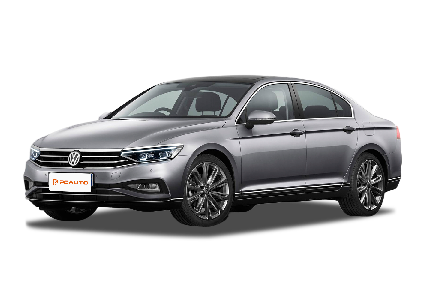Q
How to start Volkswagen Passat without the key?
VW Passat models with a keyless start system typically only require you to carry the key into the car, step on the brake, and press the start button to start the vehicle. However, make sure the vehicle is in park (P gear) and the electronic handbrake is pulled up. If the vehicle's battery power is sufficient and all systems are functioning normally, the vehicle will be successfully started by implementing the mentioned procedures.
Special Disclaimer: This content is published by users and does not represent the views or position of PCauto.
Related Q&A
Q
How to check the transmission fluid in VW Passat?
To check the transmission fluid in a VW Passat, follow these steps: first, park the vehicle on a level surface and ensure the engine is off and has been idle for a while to allow the fluid temperature to stabilize. Next, open the hood and locate the transmission dipstick. Remove the dipstick and wipe it clean. Reinsert the dipstick, then remove it again to observe the fluid level. The fluid should be between the upper and lower marks on the dipstick. If the level is too low or if the fluid appears discolored or contaminated, it's advisable to consult a professional technician for service and potential replacement.
Q
How to reset the tire pressure light on Volkswagen Passat?
To reset the tire pressure warning light on Volkswagen Passat, you can follow these general steps: First, ensure all tires are inflated to the correct pressure as specified. Next, locate the "Settings" or "Vehicle Settings" option on your vehicle's infotainment system. Within these menus, look for tire-related functions, typically labeled as "Tire Pressure Reset" or similar. Select this option and follow the on-screen prompts to complete the reset process. Note that some models may require the ignition to be on (without starting the engine) during this procedure. Please be aware that specific steps may vary slightly depending on the model year and configuration of Passat.
Q
How to replace the clutch master cylinder of the Volkswagen Passat?
In Malaysia, replacing the clutch master cylinder of a VW Passat requires certain professional skills and tools. First, ensure that the vehicle is safely parked and the handbrake is pulled up. Next, remove relevant components such as the battery and air filter box to access the clutch master cylinder. Then, disconnect the hydraulic lines and remove the mounting bolts. When installing the new clutch master cylinder, pay careful attention to proper seal placement and tighten all bolts to the specified torque values. Finally, reconnect the hydraulic lines, refill with the appropriate amount of clutch fluid, and bleed the system to ensure proper clutch operation. It's suggested that the operation should be performed by the certified automotive technician.
Q
How to replace the headlight bulb of the Volkswagen Passat?
To replace the headlight bulb on a VW Passat, you can follow these steps: Firstly, ensure the vehicle is turned off and the headlight is cooled down. Next, open the hood and locate the dust cover at the back of the headlight assembly, carefully remove it. Then, unplug the bulb connector, release the clip holding the bulb, and you can remove the old bulb. When installing the new bulb, be careful not to touch the glass part of the bulb directly to avoid dirtying it and impairing the lighting output. Secure the new bulb in place, reconnect the socket, reinstall the dust cover, and close the hood. Handle all components gently during the process to avoid damage.
Q
Which type of coolant is suitable for Volkswagen Passat?
For the Volkswagen Passat in Malaysia, it is generally recommended to adopt long-life coolant that meets Volkswagen's specifications. Premium coolant brands such as Mobil 1 and Castrol offer suitable products. However, ensure the coolant's performance parameters align with the Volkswagen Passat's engine requirements, including corrosion resistance and high-temperature tolerance. Additionally, follow the replacement intervals specified in the vehicle's maintenance manual to ensure proper engine operation and optimal cooling performance.
Q
How to reset the service light of 2012 Volkswagen Passat?
The typical procedure to reset the service reminder light of Volkswagen Passat is as follows: First, turn off the ignition. Then, press and hold the "0.0" button on the instrument cluster. While continuing to hold the button, turn the ignition back on. Keep holding the button until the service light disappears, indicating the reset is completeed. Please note that there might be slight variations depending on the vehicle's specific configuration.
Q
How to replace the brake pads of 2008 Volkswagen Passat?
To replace the brake pads of 2008 VW Passat, you can follow these steps: Firstly, prepare the appropriate tools, such as a jack and wrenches. Use the jack to lift the corresponding corner of the vehicle and ensure the vehicle is securely supported. Remove the tire, then loosen the bolts on the brake caliper and remove the old brake pads. Clean the brake caliper and related parts before installing the new brake pads. When installing the new brake pads, pay attention to the correct installation position and direction, tighten the bolts but do not over-tighten. Finally, install the tire, lower the vehicle, start it, and test the brake effect.
Q
How to start the Volkswagen Passat by using the key?
To start the Volkswagen Passat by using the key, you can follow these steps: firstly, insert the key into the ignition switch and turn it gently. The vehicle's electronic systems will perform a self-check. Once the dashboard indicators show normal status, continue turning the key to the start position and hold for a while until the engine starts. Important notes: Before starting, ensure the gear is in neutral (for manual transmission) or park (for automatic transmission), and step on the brake pedal (for automatic transmission models).
Q
How to update the navigation system of Volkswagen Passat?
In Malaysia, to update your VW Passat's navigation system, you can first check the vehicle manual for exact operational guidance. Typically, you can connect the vehicle to a stable Wi-Fi network and then look for the navigation system update option in the vehicle's settings menu. Alternatively, you can visit the VW official website, find the latest navigation update files applicable to your vehicle model and year, and follow the steps provided on the website to download and install. In addition, some VW dealerships can also provide you with navigation system update services.
Q
How to pair your phone with Volkswagen Passat?
To pair your phone with a VW Passat, you usually need to first turn on the vehicle's Bluetooth function. Find the Bluetooth setting option in the vehicle's multimedia system, and then set it to be searchable. Next, turn on your phone's Bluetooth function, find VW Passat in the list of available devices, and click to pair. You may be asked to enter a pairing code, which is generally 0000 or 1234 by default. Once paired, you can use your phone's related functions through the vehicle's multimedia system.
Latest Q&A
Q
How much is a Haval H2 2019?
The price of the 2019 Haval H2 in the used car market in Malaysia is approximately between RM40,000 and RM60,000. The specific price depends on factors such as the vehicle's condition, mileage, configuration, and region. As a compact SUV from a Chinese brand, the Haval H2 has attracted many consumers in the local market with its high cost - effectiveness and practical configurations. It is usually equipped with a 1.5 - liter turbocharged engine, which offers good power performance. Meanwhile, the interior design is more youthful, and the space is sufficient for daily family use.
If you're considering buying a used Haval H2, it is recommended to have a professional technician check the vehicle's condition and compare the quotes from different sellers. You can also learn about the used - car market situation of other models in the same class, such as the Baojun 510 or the Honda HR - V, to make a more comprehensive decision.
The maintenance cost of the Haval H2 is relatively reasonable, but some parts may need to be imported from China, and the waiting time may be a bit long. Therefore, it's best to check whether the nearby maintenance centers support the after - sales service for this model before making a purchase.
Q
Is the 2023 Dodge Charger GT fast?
The 2023 Dodge Charger GT performs well in terms of performance. It is equipped with a 3.6-liter V6 naturally aspirated engine, with a maximum output power of 300 horsepower and a peak torque of 264 lb-ft. Paired with an 8-speed automatic transmission, it can accelerate from 0 to 100 km/h in about 6 seconds. This is quite fast for a mid - to large - sized sedan, especially suitable for the urban roads and highway driving needs in Malaysia. Although it's not the fastest model in the Charger series (for example, the Hellcat version has stronger performance), the GT version strikes a good balance between power and fuel economy. Meanwhile, it also offers rear - wheel drive or all - wheel drive options to meet different driving preferences. If you're after stronger performance, you can consider the Charger R/T or Scat Pack versions. They are equipped with V8 engines, providing more power but also consuming more fuel. Given the hot climate in Malaysia, it is recommended to regularly maintain the engine and cooling system to ensure the vehicle stays in good condition in the long run.
Q
How much horsepower does a 2023 Challenger GT have?
The 2023 Dodge Challenger GT is powered by a 3.6-liter Pentastar V6 naturally aspirated engine, with a maximum horsepower of 303 hp and a peak torque of 358 Nm. It's paired with an 8-speed automatic transmission and comes with rear-wheel drive or an optional all-wheel drive system. This model is a relatively niche but performance - stable American muscle car in the Malaysian market, suitable for car owners who love a unique style.
It's worth mentioning that although the Challenger GT is positioned lower than the higher - performance R/T or Hellcat versions, its V6 engine offers a more balanced performance in terms of fuel economy and daily driving comfort, while still retaining the classic American muscle car exterior design.
For Malaysian consumers, the after - sales maintenance of this car may need to be carried out through import car franchises, and the parts supply cycle is relatively long. However, its overall reliability is quite good among similar models. If you have higher performance requirements, you can also consider other high - performance versions of the Dodge Challenger series, but the price and maintenance costs will increase significantly.
Q
How fast is the 2023 Dodge Challenger GT?
The 2023 Dodge Challenger GT is a rear-wheel-drive/all-wheel-drive muscle car that combines performance and practicality. Its 3.6-liter Pentastar V6 naturally aspirated engine can produce 303 horsepower and 268 lb-ft of torque. Paired with an 8-speed automatic transmission, it can accelerate from 0 to 100 km/h in about 6 seconds, and its top speed is electronically limited to around 250 km/h.
This car is quite rare in the Malaysian market. However, its all-weather all-wheel-drive system (optional) is especially suitable for the local rainy climate. It's easier to handle on wet roads than the standard rear-wheel-drive version. It's worth noting that although the Challenger GT isn't as powerful as high-performance versions like the Hellcat, the V6 engine offers better fuel economy for daily use. It consumes about 12 - 13 liters per 100 km in the city and can drop to 8 - 9 liters on the highway.
The characteristics of Dodge muscle cars, such as the retro exterior design, wide-body (in some versions), and customization options (like 20-inch wheels/performance exhaust) are all retained, and the maintenance cost is relatively lower compared to the V8 versions. If you're considering importing it, you also need to pay attention to Malaysia's AP import permit and the up-to-105% displacement tax (for engines above 3.0L), which may make the on-road price significantly higher than that in the US market.
In the same class, you can refer to the Ford Mustang EcoBoost (2.3T) or the Toyota Supra 2.0T. However, the Challenger GT's all-wheel-drive system and its American muscle car DNA remain unique selling points.
Q
How many cylinders does a 2023 Dodge Challenger GT have?
The 2023 Dodge Challenger GT is powered by a 3.6-liter Pentastar V6 naturally aspirated engine. It's a 6-cylinder engine with a V-shaped layout. The maximum power can reach 305 horsepower, and the peak torque is 365 N·m. It's paired with an 8-speed automatic transmission and offers rear-wheel drive or all-wheel drive options. This engine is well - known for its smoothness and reliability, making it suitable for daily driving and mild performance needs. Also, its fuel economy is more friendly compared to the V8 version.
For Malaysian consumers, the V6 engine of the Challenger GT strikes a good balance between power and fuel consumption. Coupled with its classic muscle car appearance, it's a choice that combines individuality and practicality. It's worth mentioning that the Dodge Challenger series also has higher - performance V8 versions like the R/T, Scat Pack, and Hellcat, which are equipped with 5.7 - liter, 6.4 - liter, and 6.2 - liter supercharged V8 engines respectively to meet the needs of different performance enthusiasts. However, the GT version is more suitable for the road conditions and fuel price environment in Malaysia.
View MoreRelated News

Volkswagen Locks Vehicle Horsepower, Unlocks Full Power via Subscription
JohnAug 19, 2025

Summarizing the 2025 Malaysia Auto Show, a large number of new cars were launched in Malaysia this year.
MichaelMay 12, 2025

Volkswagen ID.Buzz's Bizarre Recall: Third-Row Seats Too Wide, Need to Be Modified
Kevin WongMay 8, 2025

BYD Sets Global Sales Target of 5.5 Million Units for 2025
RobertMar 26, 2025

800,000 Volkswagen cars' location data has been leaked, and it has been ongoing for a few months
JamesJan 2, 2025
View More


















Pros
Cons